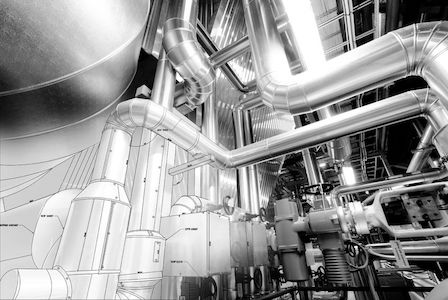When it comes to modernizing or upgrading industrial heating systems, retrofitting is often one of the first options considered. Whether you’re repairing an aging system, improving performance, or repurposing equipment for a new process, retrofitting can be an effective way to extend the life of your investment.
However, while retrofitting offers many advantages, it also comes with important challenges and limitations. Understanding these factors early in the process can help you make a well-informed decision that aligns with your operational goals, safety standards, and budget.
Below are six essential things to consider before retrofitting your industrial heating equipment.
1. Careful Planning Is Essential
A successful retrofit begins with thorough planning. Evaluate whether the existing equipment can be retrofitted safely and efficiently, and confirm that the project will deliver the results you’re looking for.
Collaborate closely with qualified engineers and system designers to determine:
- What modifications are required
- The estimated cost and project timeline
- Potential disruptions to plant operations
- Compatibility with existing infrastructure
Taking the time to assess feasibility upfront can prevent costly surprises later in the process.
2. Understand and Comply With Code Requirements
Every industry has specific codes and safety standards that must be met when modifying or installing heating systems. These can include requirements for:
-
Pressure vessel design
-
Emissions and energy efficiency
-
Electrical and mechanical safety
-
Environmental regulations
If your retrofit plan is unconventional or involves custom components, it’s especially important to verify compliance before work begins. Noncompliance can lead to project delays, fines, or even system shutdowns.
3. Review Warranties and Service Agreements
Retrofitting can sometimes affect the original equipment warranty. Before proceeding, ask:
- Will this work void existing warranties?
- Who will warranty the retrofitted system?
- What are the terms for service or maintenance after installation?
Clear answers to these questions will help you avoid unexpected costs or service gaps in the future.
4. Evaluate the Impact on Efficiency
One of the main goals of a retrofit is often to improve system efficiency. However, not all modifications result in performance gains—especially when equipment is repurposed for a new function.
Measure your system’s current efficiency and establish performance benchmarks before and after the retrofit. This data will help you evaluate whether the investment delivers the expected return.
5. Recognize That Retrofitting Isn’t Always Feasible
In some cases, retrofitting may simply not be possible. Physical space constraints, outdated designs, or incompatible materials can make upgrades impractical or unsafe.
If that’s the case, it may be more cost-effective to explore a new, customized heating system designed for your facility’s specific requirements.
6. Consider When a New System Might Be the Better Choice
Even if retrofitting is technically feasible, it might not be the best long-term solution. A new system may offer:
- Higher energy efficiency
- Improved reliability and safety
- Lower maintenance costs
- Advanced control and automation features
While the upfront investment is higher, new systems often provide greater value and performance over time—especially for facilities aiming to meet modern energy or sustainability goals.
Making the Right Choice for Your Facility
If your facility is considering a retrofit or complete system upgrade, it’s important to weigh all your options. Partnering with an experienced industrial heating equipment manufacturer can help you determine the best path forward.
At Enerquip, we’ve spent over 30 years helping facilities design, upgrade, and maintain efficient thermal fluid heating systems. Whether you’re evaluating a retrofit or exploring a new custom solution, our team can help you identify the most cost-effective and reliable option for your operation.
Ready to explore your options? Contact us today.
More from the Enerquip Blog
How to Prepare Your Facility for a Thermal Fluid Heating System Installation
How to Store Your Process Equipment Before Installation
How to Choose the Right Thermal Heating Fluid for Your System
The Case for Waste Heat Recovery: Why Your Facility Shouldn’t Ignore It
Thermal Fluid Heater Maintenance: How To Keep Your Equipment Up & Running

